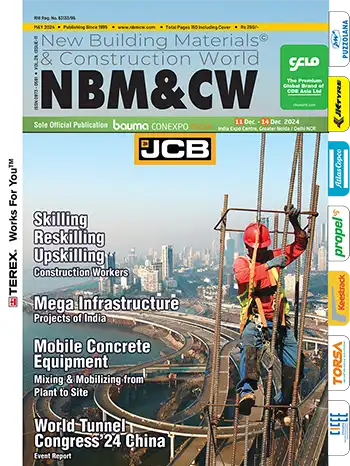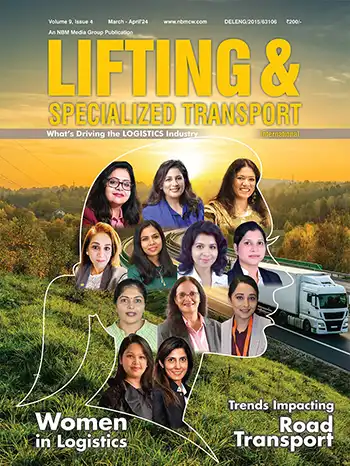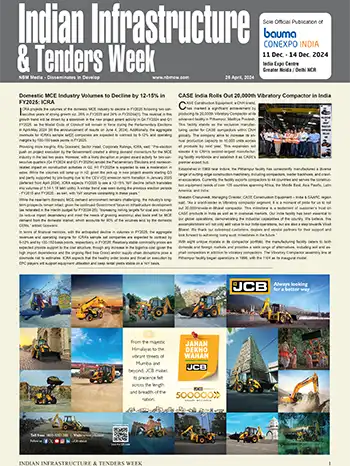Design Tree Service Consultants (DTSC) - K Srinivasa Reddy
Decarbonizing the construction industry requires strong policies and regulations that incentivize sustainable practices and drive the transition to low-carbon technologies.
Design Tree Service Consultants (DTSC) - K Srinivasa Reddy, Managing Director
Construction Industry is a big contributor to the current problems we have from the heat island effect, high energy consumption, waste generation, and carbon intensive processes and materials. Decarbonizing the construction industry is a crucial step in combating climate change and achieving sustainability goals. This needs to be done in a collective way involving manufacturers, developers, and end-users, who will need to take a multi-prong approach and consider the following factors:
Renewable Energy: Decoupling from fossil fuel dependence will be crucial, moving forward. Solar, wind, bio, and kinetic power, can significantly reduce the carbon footprint of construction projects. Alternate energy can be used to power construction sites, manufacturing processes, and buildings themselves.
Energy Efficiency: Improving energy efficiency in construction practices and building designs is essential. Today, technology can help us achieve 20 to 30% efficiency through use of energy-efficient materials, insulation, lighting systems, and advanced HVAC (heating, ventilation, and air conditioning) technologies.
Sustainable Materials: We need to opt for sustainable and low-carbon materials in construction projects. This includes using recycled or reclaimed materials, environmentally friendly alternatives to concrete (such as GGBS, Clark, fly ash etc), and high strength design using PT etc. Minimizing use of materials with high carbon emissions like steel and cement should be the basis of design. Prefabricated and modular construction techniques can reduce waste and carbon emissions by optimizing the manufacturing process, using fewer materials, and minimizing onsite construction time.
Lifecycle Assessment (LCA): We do not have robust data to benchmark the carbon footprint of the Real Estate industry. LCA will help us understand consumption patterns and bring in accountability. This assessment helps identify areas for improvement and informs the decision-making processes. Optimizing transportation and logistics to minimize carbon emissions will need efficient planning of construction site deliveries, promoting local sourcing of materials, and considering alternative transportation methods like electric vehicles.
Waste Reduction and Recycling: Implementing a waste management strategy to reduce construction waste and promote recycling and having an adequate infrastructure for processing waste is crucial for every project.
Policy Support and Incentives: Government needs to play a significant role by implementing supportive policies and offering incentives for low-carbon construction practices. This can include tax benefits, grants, or streamlined permitting processes for constructing sustainable projects.

To achieve our national goal of a carbon-free India by 2070, we need to come together, learn, develop new ways to design and build. Innovation, technology, and versatility will be the key words. Decarbonizing the construction industry requires strong policies and regulations that incentivize sustainable practices and drive the transition to low-carbon technologies. Some policy measures that need to be considered:
Building Standards and Codes: Update codes to reflect the current performance and efficiency in the industry. This can include renewable energy integration, energy-efficient building envelopes, and use of eco-friendly and sustainable materials.
Financial Incentives: Providing financial incentives such as grants, subsidies, and tax credits for construction companies will inspire them to adopt sustainable practices or invest in low-carbon technologies. These incentives can help offset the higher upfront costs associated with sustainable construction.
Training, Education, R&D: Allocating funding for educational and research purposes for the development of innovative technologies and materials that can reduce the carbon footprint of the construction industry, and support the development of new building materials, construction techniques, and energy-efficient systems.
Infrastructure Investment: Direct public and private infrastructure investments towards sustainable and low-carbon projects can include prioritizing the development of green infrastructure, renewable energy installations, and sustainable urban planning.
It is important for policymakers to engage with stakeholders, including construction companies, architects, engineers, and environmental organizations, to ensure that policies are effective, feasible, and aligned with industry needs. By implementing these policy measures, state governments can create an enabling environment for decarbonizing the construction industry and driving the transition towards a sustainable future.
NBM&CW JULY 2023


















